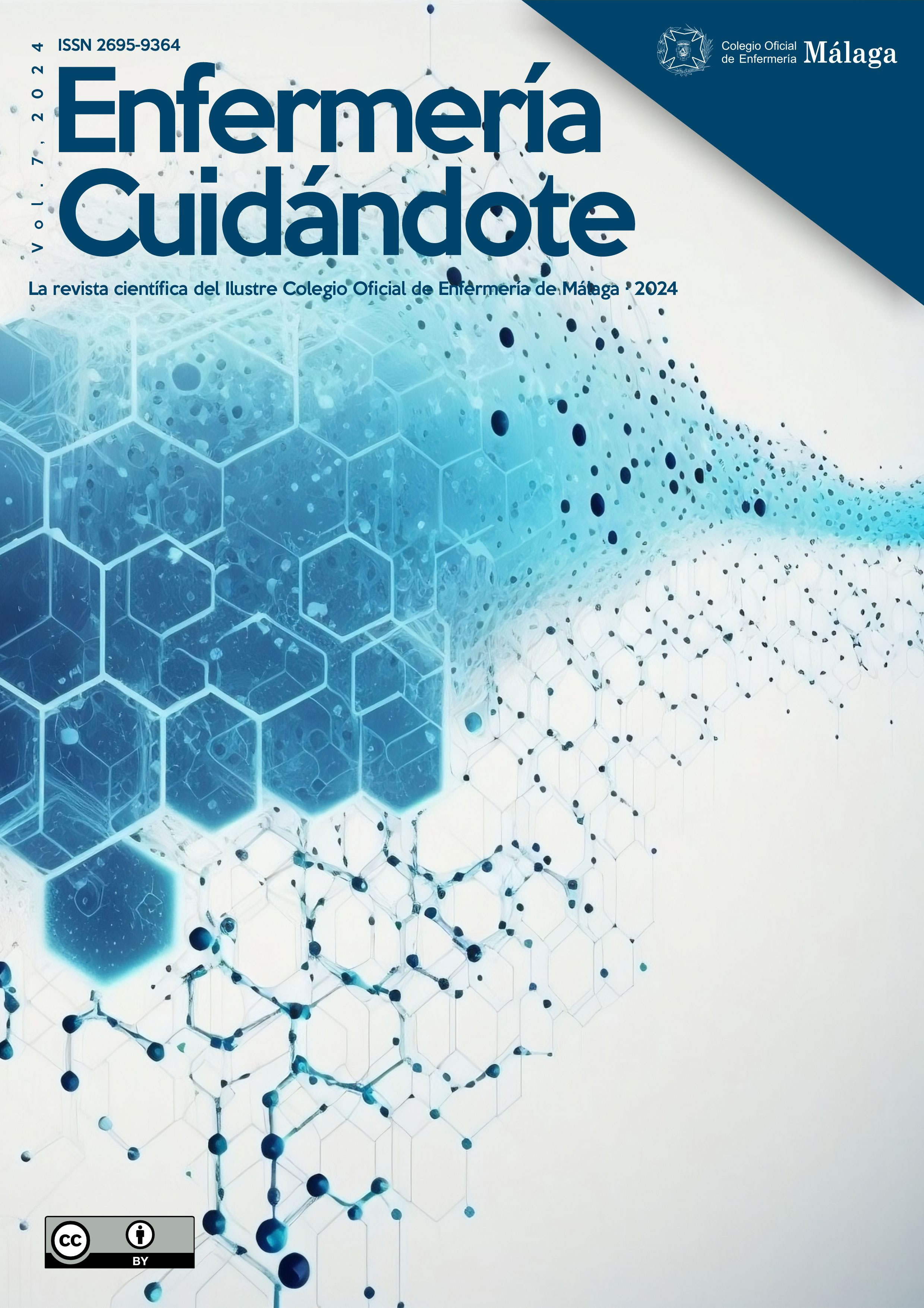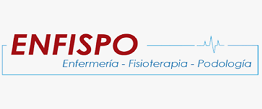Implementation of a digital system for the reporting of adverse events in nursing
DOI:
https://doi.org/10.51326/ec.7.7930275Keywords:
Adverse Event, Notification, Nursing, SystemAbstract
Objective: To develop a digital system for the reporting of adverse events (AEs) in a hospital.
Methods: Descriptive research of the design, development and implementation of the digital system for AE notification.
Results: Implementation of the digital system for AE reporting, built in 5 stages with the participation of nursing professionals. It is structured in 5 areas (Definitions, Event, Consultations, Grants and Administrative) that contain information related to the user and the EA. EA information consists of: general data, medical diagnosis, awareness, type of event, related person, and event information. The Event Information includes the detail of: place, date of incident and notification, general description, risk reduction, type and degree of damage, contributing factors (professional, organization, medication, user-related, work environment/facilities/equipment, external factors, and general commentary).
Conclusion: The EA notification system meets the desired requirements related to the characterization of the event, anonymity, voluntariness, systemic approach, statistical analysis, easy to use, provides information for timely management decision-making and lacks punitive intent, which promotes a culture of safety and can be extrapolated to the country's health network.
Downloads
References
Organización Mundial de la Salud. Ginebra: Organización Mundial de la Salud; 2022. Seguridad del paciente; 11 de septiembre de 2023. Disponible en: https://www.who.int/es/news-room/fact-sheets/detail/patient-safety [Consultado 13-09-2022]
Sousa P, Mendes W, comps. Segurança do paciente: conhecendo os riscos nas organizaçoes de saúde. 2ª ed. Rio de Janeiro (RJ): CDEAD, ENSP, Ed. Fiocruz; 2019. https://doi.org/10.7476/9788575416419
Fundación FEMEBA. Buenos Aires: Fundación FEMEBA; 2019. Seguridad del paciente: OMS la reconoce como una prioridad sanitaria. 72º Asamblea Mundial de la Salud, Organización Mundial de la Salud (OMS); 28 de mayo de 2019. Disponible en: https://www.fundacionfemeba.org.ar/blog/farmacologia-7/post/seguridad-del-paciente-oms-la-reconoce-como-una-prioridad-sanitaria-46790 [Consultado 07-08-2022]
Elliott RA, Camacho E, Jankovic D, Sculpher MJ, Faria R. Economic analysis of the prevalence and clinical and economic burden of medication error in England. BMJ Qual Saf. 2021;30(2):96-105. https://doi.org/10.1136/bmjqs-2019-010206
Rodríguez-Herrera R, Mora EV, Yamaguchi-Díaz, LD. Nuestra experiencia respecto del estudio IBEAS, retos y perspectivas. Rev CONAMED. 2018. Disponible en: https://www.researchgate.net/publication/343179649 [Consultado 07-08-2022]
Gordo C, Núñez-Córdoba JM, Mateo R. Root causes of adverse drug events in hospitals and artificial intelligence capabilities for prevention. J Adv Nurs. 2021;77(7):3168-75. https://doi.org/10.1111/jan.14779
Organización Mundial de la Salud. Informe 72ª Asamblea Mundial de la Salud A72/26. Seguridad del paciente: medidas mundiales en materia de seguridad del paciente. Ginebra: Organización Mundial de la Salud; 2019. Disponible en: https://apps.who.int/gb/ebwha/pdf_files/WHA72/A72_26-sp.pdf [Consultado 13-09-2022]
Tanaka K, Eriksson L, Asher R, Obermair A. Incidence of adverse events, preventability and mortality in gynaecological hospital admissions: A systematic review and meta-analysis. Aust N Z J Obstet Gynaecol. 2019;59(2):195-200. https://doi.org/10.1111/ajo.12937
Schwendimann R, Blatter C, Dhaini S, Simon M, Ausserhofer D. The occurrence, types, consequences and preventability of in-hospital adverse events - a scoping review. BMC Health Serv Res. 2018;18(1):521. https://doi.org/10.1186/s12913-018-3335-z
Murphy A, Griffiths P, Duffield C, Brady NM, Scott AP, Ball J, et al. Estimating the economic cost of nurse sensitive adverse events amongst patients in medical and surgical settings. J Adv Nurs. 2021;77(8):3379-88. https://doi.org/10.1111/jan.14860
Rodríguez Rivera M, Sánchez Sánchez LM, Jiménez Chávez LC. Eventos adversos, centinela y cuasifallas en el Servicio de Pediatría de un hospital de tercer nivel. Enf Inf Microbiol. 2017;37(2):56-64. Disponible en: https://www.medigraphic.com/pdfs/micro/ei-2017/ei172e.pdf [Consultado 11-08-2022]
Caja Costarricense de Seguro Social. Política institucional de Calidad y de Seguridad del Paciente. San José (Costa Rica): Caja Costarricense de Seguro Social; 2007. Disponible en: https://www.binasss.sa.cr/seguridad/PoliticaCalidadPaciente.pdf [Consultado 13-09-2022]
Rodríguez-Herrera R, Victor Mora E, Gómez-Alpízar L, Rizo-Amézquita JN, Yamaguchi-Díaz LP, Placencia F, et al. Incidentes y eventos adversos relacionados con la seguridad de los pacientes. Una propuesta de clasificación enfocada en la gestión organizacional. Bol CONAMED. 2019;22(4). Disponible en: https://www.researchgate.net/publication/334173263 [Consultado 13-09-2022]
Ministerio de Salud. San José (Costa Rica): Ministerio de Salud; 2022. Regulación de productos de interés sanitario. Tecnovigilancia; [Fecha desconocida], Disponible en: https://www.ministeriodesalud.go.cr/index.php/regulacion-de-la-salud/20-regulacion-de-la-salud/52-tecnovigilancia [Consultado 13-09-2022]
Rojas-Armadillo ML, Jiménez-Báez MV, Chávez-Hernández MM, González Fondón A. Validación de un sistema de registro de eventos adversos en atención primaria. Rev Med Inst Mex Seguro Soc. 2016;54(3):327-33. Disponible en: https://www.medigraphic.com/pdfs/imss/im-2016/im163j.pdf [Consultado 13-09-2022]
Mira JJ, Cho M, Montserrat D, Rodríguez J, Santacruz J. Elementos clave en la implantación de sistemas de notificación de eventos adversos hospitalarios en América Latina. Rev Panam Salud Pública. 2013;33(1):1-7. Disponible en: https://www.scielosp.org/pdf/rpsp/2013.v33n1/01-07/es [Consultado 13-09-2022]
Tevis SE, Schmocker RK, Wetterneck TB. Adverse Event Reporting: Harnessing Residents to Improve Patient Safety. J Patient Saf. 2020;16(4):294-8. https://doi.org/10.1097/pts.0000000000000333
Jarošová D, Zeleníková R, Plevová I, Mynaříková E, Kachlová M. Differences in the Incidence of Adverse Events in Acute Care Hospitals: Results of a Multicentre Study. Int J Environ Res Public Health. 2022;19(9):5238. https://doi.org/10.3390/ijerph19095238
Sanko JS, Mckay M. Participation in a System-Thinking Simulation Experience Changes Adverse Event Reporting. Simul Healthc. 2020;15(3):167-71. https://doi.org/10.1097/sih.0000000000000473
Aquines Soares E, Costa Carvalho TL, Larissa Pereira dos Santos J, Maciel da Silva S, Cruz Santos J. Cultura de Segurança do Paciente e a Prática de Notificação de Eventos Adversos. Revista Eletrônica Acervo Saúde. 2019;36:e1657. https://doi.org/10.25248/reas.e1657.2019
Lima Neto AV, Antunes da Silva F, Oliveira Lima Brito GM, Nóbrega Elias TM, Cortez de Sena BA, Medeiros de Oliveira R. Análisis de las notificaciones de eventos adversos en un hospital privado. Enferm Glob. 2019;18(55):314-23. https://doi.org/10.6018/eglobal.18.3.325571
Caja Costarricense de Seguro Social. Manual Técnico del Programa Institucional de Estándares de Salud en Enfermería, dirigido a los tres Niveles de Atención. San José: Caja Costarricense de Seguro Social; 2016. Disponible en: https://www.binasss.sa.cr/protocolos/enfermeria1.pdf [Consultado 14-09-2022]
Vargas Bermúdez ZM, Noguera Mena H, López Pérez JF. Validación aparente de un Instrumento para la Notificación de Eventos Adversos Asociados a la Atención de la Salud. Enferm Actual Costa Rica. 2020;39. https://doi.org/10.15517/revenf.v0i39.41436
Hernández Sampieri R, Fernández Collado C, Baptista Lucio P. Fundamentos de metodología de la investigación. 6ª ed. Madrid: McGraw-Hill; 2019.
Hospital R.A. Calderón Guardia. Informe estadístico Enero 2023. San José (Costa Rica): Departamento de Estadística; 2023.
Ministerio de Sanidad. Sistema de Notificación y Aprendizaje para la Seguridad del Paciente (SiNASP). Este es el enlace web del recurso: https://seguridaddelpaciente.sanidad.gob.es/proyectos/financiacionEstudios/sistemasInformacionNotificacion/incidentesEASNS/docs/SINAPS_2020_accesible.pdf
Hospital Universitario Reina Sofía (Córdoba). Seguridad del paciente: notificación de incidentes relacionados con la seguridad del paciente. Procedimiento operativo estandarizado. Córdoba: Hospital Universitario Reina Sofía; 2020. 9 p. Acta Nº 2. Disponible en: https://www.sspa.juntadeandalucia.es/servicioandaluzdesalud/hrs3/fileadmin/user_upload/area_gerencia/calidad/procedimientos_generales/14_poe_notif_eventos_adversos_0620.pdf [Consultado 10-10-2022]
Mora Pérez Y, Bosi de Souza Magnago TS, Torres Esperón JM, Espinosa Roca AA. Sistema de notificación de eventos adversos en unidades de cuidados intensivos para gestión de riesgo. Rev Cubana Enferm. 2020;36(3):e2640. Disponible en: http://scielo.sld.cu/pdf/enf/v36n3/1561-2961-enf-36-03-e2640.pdf [Consultado 15-10-2022]
Gutiérrez López MA, Noreña Piedrahita IV, Gómez Ceballos DA. Cultura punitiva en la seguridad del paciente: revisión sistemática de la literatura. Hallazgos. 2021;6(2):236-59. Disponible en: https://dialnet.unirioja.es/descarga/articulo/8276772.pdf [Consultado 10-10-2022]
Agency for Healthcare Research and Quality. Preventing falls in hospitals. Tool I: Medication fall risk score and evaluation tools. Rockville (MD): Agency for Healthcare Research and Quality; 2013. Disponible en: https://www.ahrq.gov/patient-safety/settings/hospital/fall-prevention/toolkit/medication-risk-score.html [Consultado 10-10-2022]
Kafantogia K, Katsafourou P, Tassiou A, Vassou N. Falls among hospitalized patients. J Frailty Sarcopenia Falls. 2017;2(3):53-7. https://doi.org/10.22540/JFSF-02-053
Miertová M, Bóriková I, Tomagová M, Madleňák J, Grendár M, Barnau A. Risk factors of falling among hospitalized patients with neurological disease – post-fall analysis. Med Stud. 2021;37(1):16-24. https://doi.org/10.5114/ms.2021.104996
San José-Saras D, Valencia-Martín JL, Vicente-Guijarro J, Moreno-Núñez P, Pardo-Hernández A, Aranaz-Andrés JM. Adverse events: an expensive and avoidable hospital problem. Ann Med. 2022;54(1):3156-67. https://doi.org/10.1080/07853890.2022.2140450




















